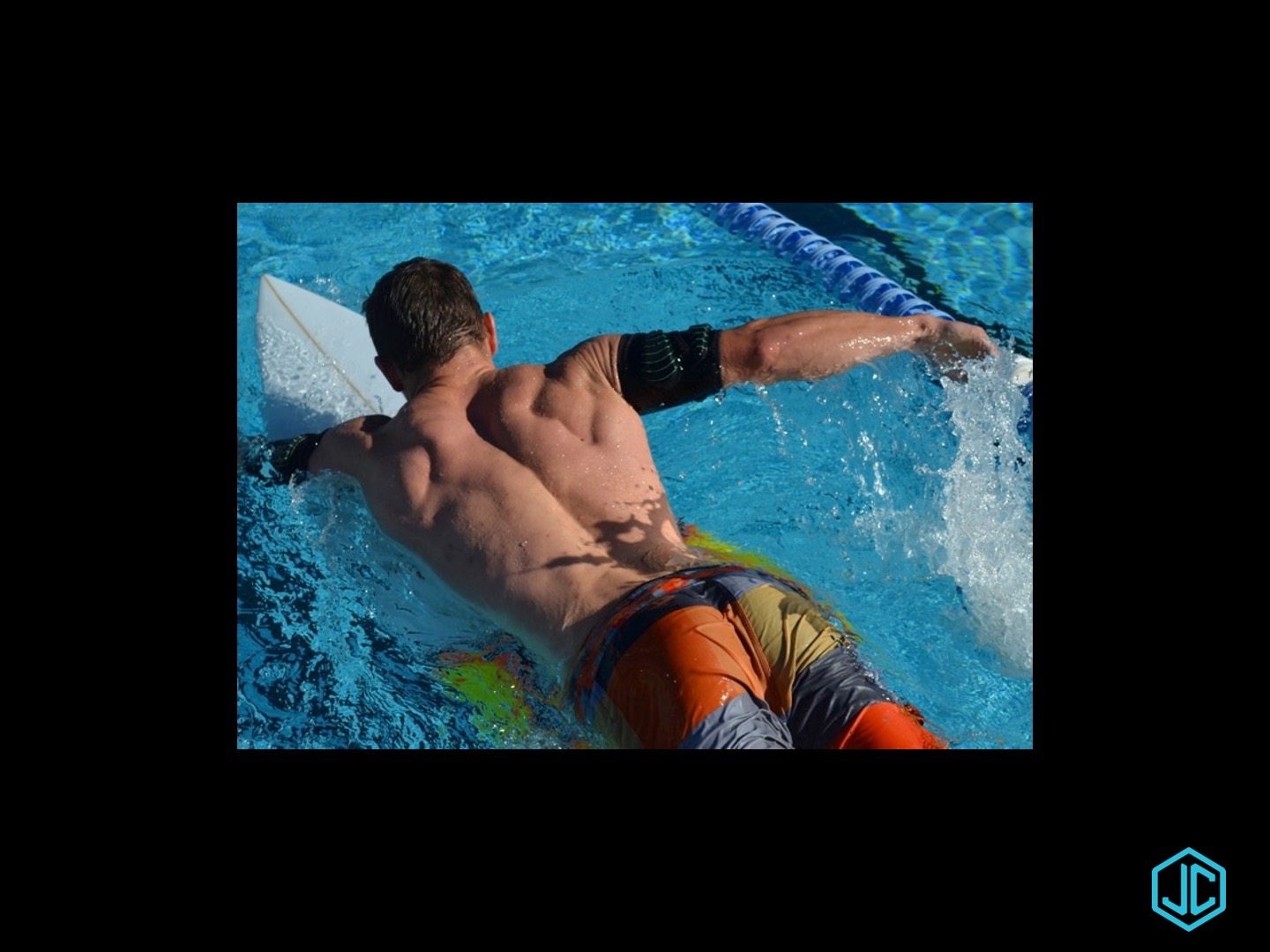
I have been talking about the uses of wearable resistance (WR) in land based sports however, you can use WR as a form of strength training for swimming also. The use of WR in the water may be a good option from a practical standpoint, this training can make efficient use of the training time you have with your athletes e.g. some mixing of loaded vs unloaded lengths in the pool. Also, athletes tend to be more enthusiastic about using task-oriented exercises that are more likely to transfer to competition, whether this be land or water based.
This train of thought was echoed by Coach Jeremy Sheppard a few years back when he was the Head of Strength and Conditioning at Surfing Australia. He had this to say.“With surf paddling you must be careful with how you might over-load the athlete in a specific paddling intervention, as … the rotator cuff is vulnerable.Thus far we’ve trialed using very light loads applied to only the upper arm, without an insidious insult to the shoulder, and yet a considerable metabolic-cost increase. This might allow us to create adaptations we are after, in a more targeted and efficient manner.”
We have done some research in swimming that I’d like to share with you, if you're keen?